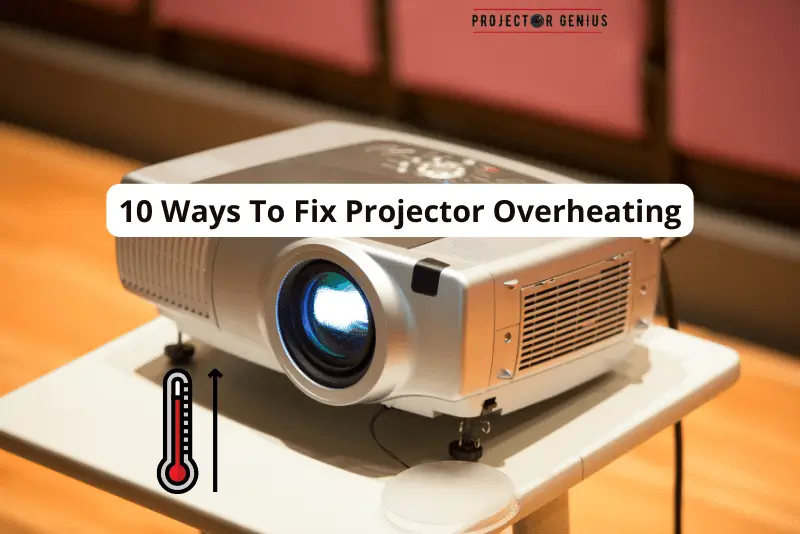How to Choose Best Projector Resolution for Gaming: A Step-by-Step Guide
-
 Written by:
Kristy Roger
Written by:
Kristy Roger
- Last Updated:
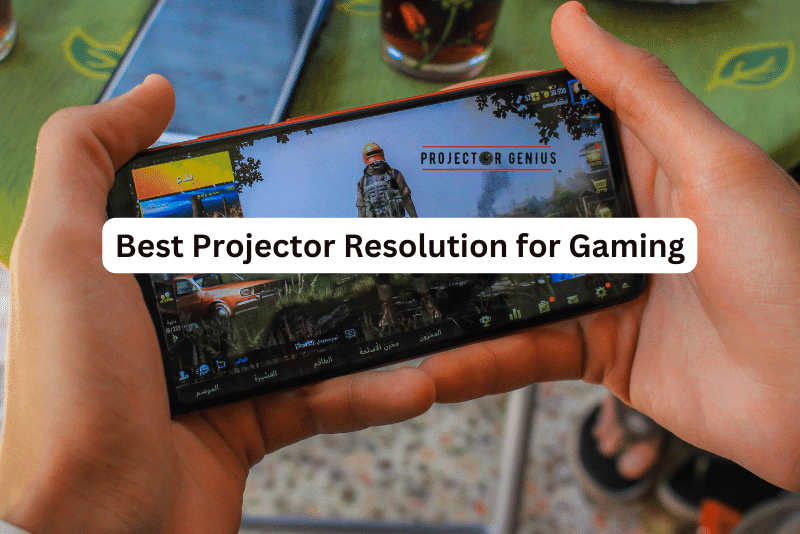
Got game? Need a projector? Listen up! Picking the best projector resolution for gaming can feel like a quest.
Console games, handheld ones, old-school games, or PC adventures? They all need something different.
There are a lot of projector resolutions out there, but which one is best for games? It’s a little tricky to figure out.
Good news! I know a lot about projectors. I made this guide to help you pick the perfect resolution for your games whether you’re into console, handheld, retro, or PC games.
If you’re new to projectors, you’re in the right spot. If you already know some stuff, jump ahead using our handy table of contents. Ready to learn more? Let’s level up together!
You may also interested in Best projector resolution for watching movies.
How to choose best projector resolution for gaming? When choosing a projector resolution for gaming, opt for at least 1080p for a clear and enjoyable experience. If you’re a serious gamer and want immersive visuals with finer details, consider 4K resolution projectors. Balancing resolution with your gaming hardware’s performance is key to an optimal gaming setup.
I recommend using the Table of Contents to quickly access the information you need.
My article is designed to cater to home cinema users of all levels, from Beginners to Advanced enthusiasts.
Table of Contents
What is Gaming Resolution?
Gaming resolution determines the pixel count for visuals in video games, affecting detail and clarity. Resolutions like 1080p, 1440p, and 4K define screen quality.
Higher resolutions offer more immersion and detail but demand stronger hardware for smooth gameplay. Gamers balance resolution and performance based on hardware capabilities for an enjoyable experience

The Most Common Gaming Projector Resolutions
Let’s dive into the most common gaming projector resolutions in a nutshell.
Full HD (1920×1080)
First up, we have Full HD (1920×1080) – the go-to for many gamers. It strikes a balance between crisp visuals and system demands. You get solid detail without putting too much strain on your gaming setup, making it a popular choice for a smooth gaming experience without breaking the bank.
4K UHD (3840×2160)
Now, if you’re after the pinnacle of detail, there’s 4K UHD (3840×2160). This resolution offers a breathtaking level of clarity, showing every intricate texture and nuance in the game world. However, be ready for a trade-off – 4K gaming demands serious graphics power. You’ll need a robust system to fully enjoy the eye candy while maintaining a playable frame rate.
In the end, whether you go for Full HD or jump into the 4K realm, your choice should align with your gaming rig’s capabilities and how much visual flair you’re aiming for in your gaming escapades.
Best Projector Resolution for Gaming
It’s like choosing the right lens to see your virtual world in all its glory. 4K UHD (3840×2160) is the heavyweight champion here. If you’re all about stunning visuals, this resolution delivers lifelike details that make you feel like you’re right inside the game.
However, keep in mind that the best 4K projector requires some serious gaming horsepower. Your system needs to flex its muscles to handle all those pixels and maintain a smooth gaming experience.
But if you’re after a solid option that strikes a balance between performance and quality, the best Full HD (1920×1080) projector is a reliable choice. It offers clear visuals without pushing your gaming rig to its limits. You’ll still get immersed in the game’s world without worrying too much about technical constraints.
Ultimately, the best resolution depends on how far you want to push the graphics envelope and what your gaming setup can handle. It’s like picking the right tool for the job – make sure it fits your needs and preferences!
Are there Budget-Friendly Options for High-Resolution Projectors?
I’ve often wondered if there are any wallet-friendly choices for projectors with high resolutions. So, I did a bit of digging, and the answer is yes! There are definitely budget-friendly options out there that offer impressive high resolutions.
I looked into different brands and models, and I came across the HAPPRUN 1080p projector, which is quite budget-friendly, ranging from around $135 to $150.
What caught my attention is that it even includes a 100-inch screen – talk about value! This projector delivers good resolution without breaking the bank.
It also supports various connection options like smartphones, HDMI, USB, AV, Fire Stick, and even PS5. This makes it a versatile choice for different entertainment needs.
It’s reassuring to know that I don’t necessarily have to spend a fortune to experience high-resolution visuals. The HAPPRUN projector seems like a solid option for those looking for quality without a hefty price tag.
So, if you’re on the hunt for budget-friendly high-resolution projectors, this one could definitely be worth considering.
Best Projector Resolution for Gaming PC
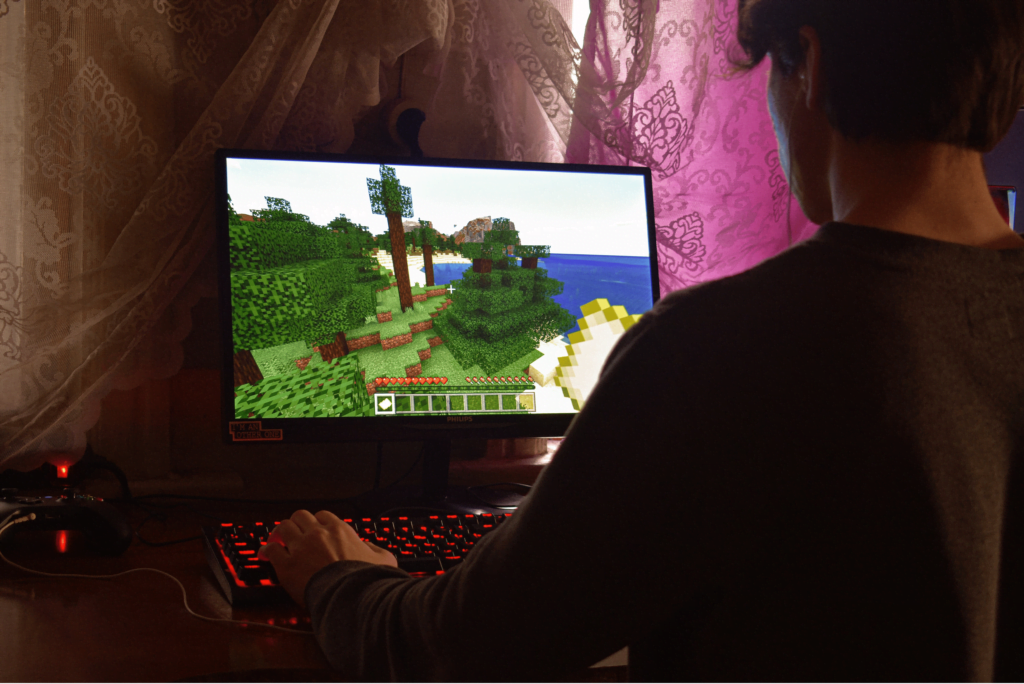
As a dedicated gaming enthusiast, I’ve found that 1080p resolution is the optimal choice for my gaming PC. This resolution strikes a perfect balance between visual quality and smooth performance, enhancing my gaming experience in a remarkable way.
With 1080p, I get to enjoy detailed graphics and vibrant visuals that make every game come to life. It’s a noticeable upgrade from 720p, offering sharper images without putting too much strain on my system.
Pairing my gaming PC with a projector that supports 1080p resolution ensures that I’m getting the most out of my hardware and the games I love. While higher resolutions like 4K might seem appealing, 1080p provides a practical sweet spot in terms of both visual fidelity and frame rates, resulting in a seamless and immersive gaming session.
In the world of gaming projectors, 1080p has proven to be my ideal choice, delivering an exceptional gaming experience without compromising on performance. 1080p is also ideal for RV owners and on the go for camping.
Best Projector Resolution for Gaming Consoles
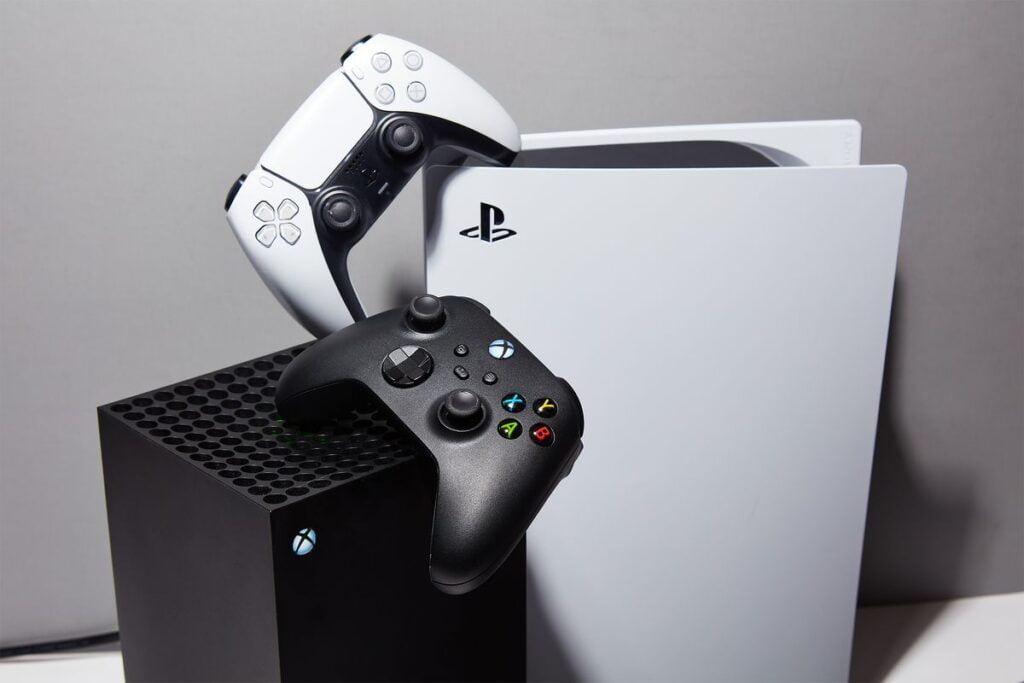
When it comes to picking the best projector resolution for gaming consoles, a few factors come into play. Resolution, frame rate, and graphics capabilities are all crucial considerations.
While Full HD (1920×1080) used to be the go-to resolution for gaming, these days, 4K resolution (3840×2160) is becoming more popular for a more immersive gaming experience. This higher resolution allows for sharper visuals and greater detail, especially on larger screens.
However, it’s not just about resolution. Frame rate is equally important for smooth gameplay. Many consoles can handle games at 60 frames per second (fps) or even higher. To take full advantage of this, your projector should support at least a 60Hz refresh rate.
Some modern projectors even offer higher refresh rates for an ultra-smooth experience. Additionally, consider the connection type. HDMI is the standard for connecting gaming consoles, so make sure the projector has an appropriate HDMI input to ensure the best possible connection quality.
Best Projector Resolution for Gaming Handhelds
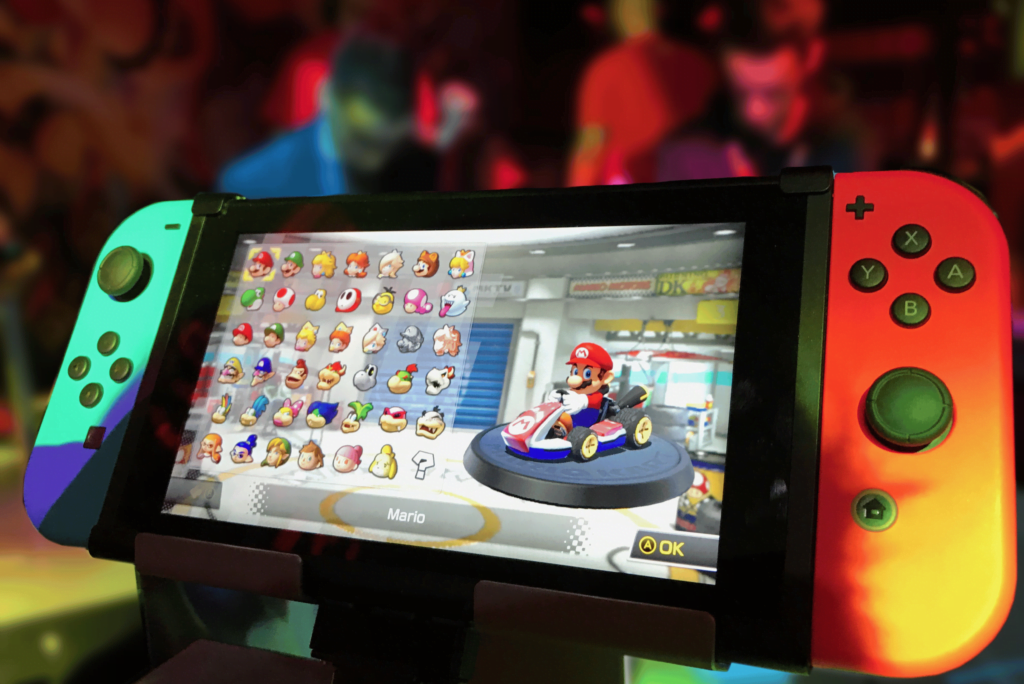
Choosing the right projector resolution for gaming handhelds involves a few key considerations. Frame rate and graphics capabilities play a significant role in your gaming experience.
For handheld devices, like portable consoles or gaming smartphones, 720p projector resolution is often a solid choice.
This resolution strikes a balance between visual clarity and performance, as these devices are generally optimized for smooth gameplay at this resolution.
When it comes to connection types, ensure your projector supports the necessary input options. Most gaming handhelds use an HDMI output for connecting to displays. Therefore, your projector should have at least one HDMI input to guarantee compatibility.
It’s also important to note that while higher resolutions like 1080p or even 4K might seem tempting, handhelds might struggle to deliver high frame rates and maintain optimal graphics quality at those resolutions.
Stick to 720p for a smoother gaming experience that maximizes both visuals and performance on the big screen.
Best Projector Resolution for Retro Gaming
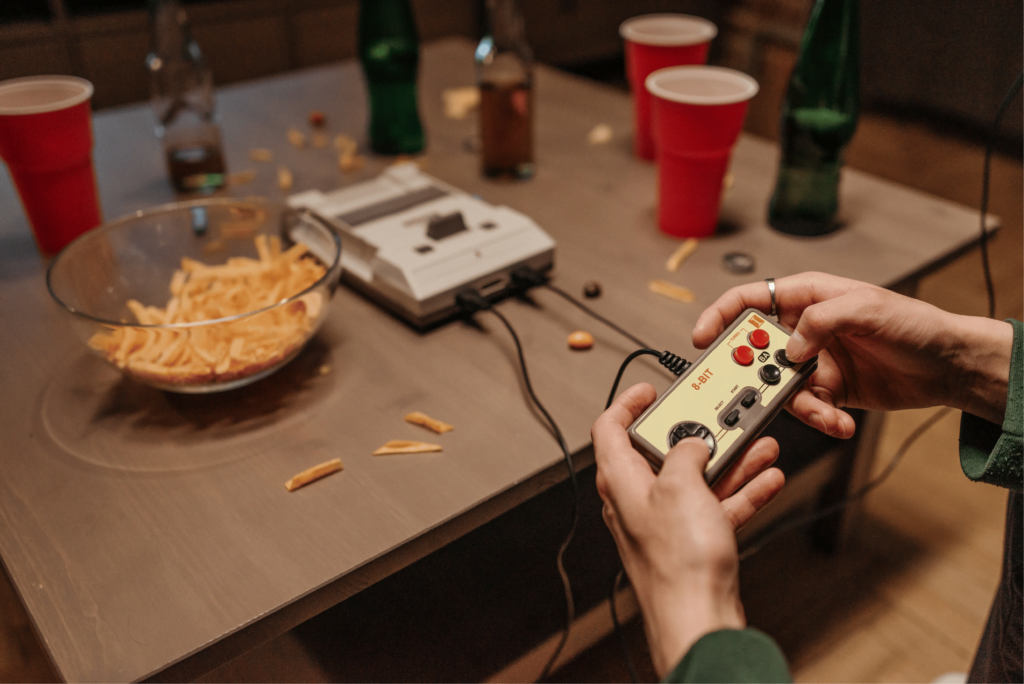
When it comes to choosing the best projector resolution for retro gaming, there are a few factors you’ll want to consider to ensure an optimal gaming experience.
Firstly, frame rate and graphics capabilities play a key role. For retro games, which often have simpler graphics compared to modern titles, a lower-resolution projector might actually be a better fit. Opting for a projector with a resolution of 720p can help maintain the authentic look and feel of retro games, while still delivering smooth gameplay with higher frame rates.
Another important factor to think about is the connection type. Many retro gaming consoles use older video outputs like composite, S-video, or component cables. It’s crucial to make sure the projector you choose supports these connection types. Some projectors come with built-in upscaling capabilities, which can help improve the visuals of older games on modern screens without sacrificing the nostalgic charm.
For the best retro gaming experience on a projector, go for a resolution of 720p to preserve the classic look of the games and maintain a smoother frame rate. Prioritize projectors that support older connection types, ensuring you can easily hook up your vintage gaming consoles. This way, you’ll be able to immerse yourself in the pixelated worlds of yesteryears, just as you remember them!
Best Projector Resolution for Multiplayer
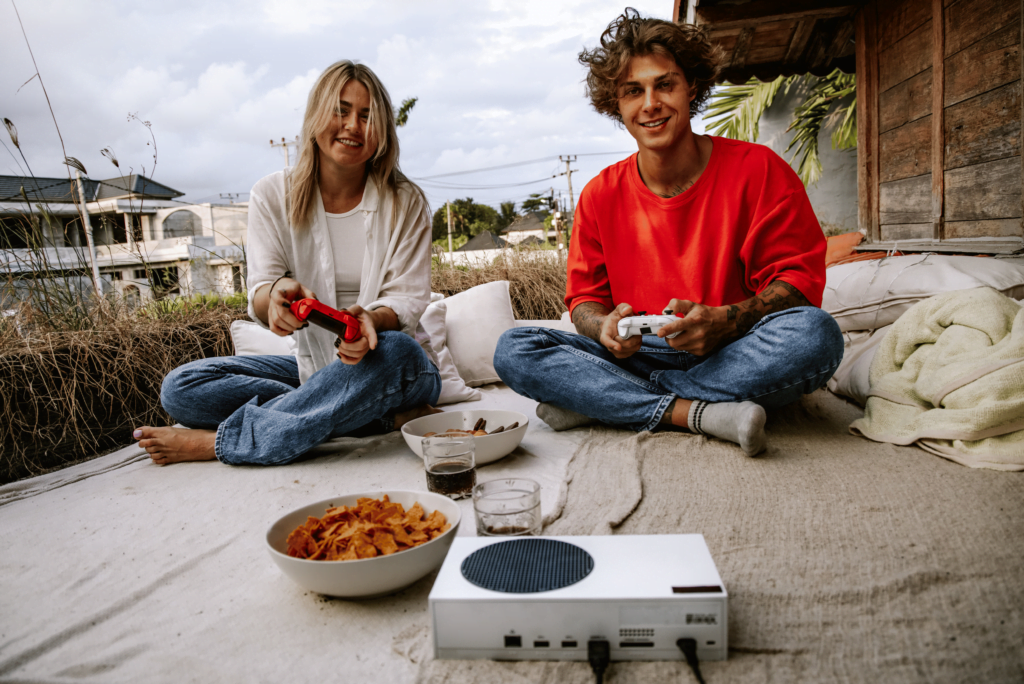
When it comes to choosing the right projector resolution for multiplayer and competitive gaming, you’ll want to strike a balance between visual quality and performance. Higher resolutions can offer stunning visuals, but they might demand more from your gaming rig and potentially introduce input lag.
For a seamless gaming experience with minimal lag, 1080p (Full HD) projector resolution is often considered a sweet spot. It delivers sharp visuals and maintains a smooth gameplay flow, making it a popular choice among gamers.
Consider the impact of resolution on competitive gaming experiences. While 4K projectors can offer incredible detail, they might not be the best choice for competitive gaming due to the demands they place on your hardware and the potential for increased input lag.
Competitive gamers prioritize fast response times and fluid motion over ultra-high resolutions. Sticking with a Full HD resolution can keep your gameplay responsive and immersive, allowing you to react quickly to in-game situations.
Remember, while resolution matters, other factors like input lag, refresh rate, and overall responsiveness are equally important to consider when setting up your gaming projector.
Factors to Consider When Choosing a Projector Resolution for Gaming
When I’m in the exciting process of choosing the perfect projector resolution for gaming, there are several vital factors that come into play. Each factor plays a crucial role in ensuring that my gaming experience is nothing short of optimal and immersive.
Resolution
First and foremost, the resolution itself is a pivotal consideration. A higher resolution, such as 1440p or 4K, means more pixels and finer details on the screen.
This can significantly enhance the visual quality of the games I play, making textures, characters, and environments look incredibly sharp and lifelike.
However, it’s important to remember that a higher resolution demands more processing power from both the projector and the gaming console or PC.
Hardware Capabilities
Speaking of hardware capabilities, I make sure to take into account the horsepower of my gaming setup.
While a projector with a higher resolution can deliver stunning visuals, my gaming hardware needs to be up to the task of producing those graphics smoothly.
After all, an impressive resolution won’t mean much if my gaming rig struggles to keep up with it.
Frame Rate
Another critical factor in my decision-making process is the frame rate. A higher frame rate translates to smoother animations and more responsive gameplay.
While resolution contributes to the visual quality, a high frame rate ensures that my actions in the game are accurately and swiftly reflected on the screen. A balance between resolution and frame rate is key to achieving an optimal gaming experience.
Input Lag
Input lag is another aspect that I thoroughly consider. Input lag is the delay between my actions and their representation on the screen. A lower input lag is essential for fast-paced games, as it ensures that my movements and commands are registered in real-time. High-resolution projectors might sometimes have slightly higher input lag, so finding a projector that strikes a good balance is crucial.
Gaming Area Size
Of course, the size of my gaming area and the viewing distance also play a role in my decision. Larger screens benefit more from higher resolutions, as the increased pixel density becomes more apparent.
On the other hand, if I’m gaming on a smaller screen or from a shorter distance, a lower resolution might still provide an excellent experience without overloading my hardware.
Ultimately, my goal is to create an immersive and enjoyable gaming setup that caters to my preferences and gaming style.
By taking into account the resolution, hardware capabilities, frame rate, input lag, screen size, and viewing distance, I’m able to make an informed decision that ensures my gaming sessions are nothing short of exceptional.
What is the Impact of Resolution on the Gaming Experience?
Resolution plays a crucial role in shaping the gaming experience. It refers to the number of pixels that make up the image on your screen. Higher resolutions, like 4K, provide greater detail and clarity, making game worlds and characters look incredibly lifelike. This can enhance immersion as you feel more connected to the virtual environment. You’ll notice finer textures, sharper edges, and smoother curves, all of which contribute to a more visually appealing experience.
However, it’s worth noting that to fully appreciate higher resolutions, you need a larger display or sit closer to the screen. On smaller screens, the difference might be less noticeable.
Trade-offs between Resolution and Performance
Now, let’s talk about the trade-offs between resolution and performance. While higher resolutions look stunning, they require more graphical processing power. This can impact responsiveness as the system devotes resources to rendering more pixels, potentially leading to lower frame rates and occasional stuttering.
On the other hand, lower resolutions, like 1080p or even 720p, demand less from your hardware, resulting in smoother gameplay and better frame rates. This is crucial for competitive gaming where split-second reactions matter. Striking the right balance between resolution and performance is essential – it depends on your hardware capabilities and personal preferences.
Best Projector Resolution for Gaming FAQs (Frequently Asked Questions)
Does a Higher Resolution Always Mean Better Gaming Visuals?
Higher resolution in gaming doesn’t always equate to better visuals. While a higher resolution can offer sharper and more detailed images, visual quality is influenced by a combination of factors.
These include graphics settings, textures, lighting effects, and frame rates. Sometimes, opting for a slightly lower resolution can be beneficial if it allows for smoother gameplay with higher frame rates and more advanced graphics features enabled.
Game developers often focus on creating immersive experiences by balancing various elements, so simply chasing the highest resolution might not guarantee the most visually appealing or enjoyable gaming experience.
What is the Optimal Screen Size for Different Projector Resolutions for Gaming?
When it comes to finding the perfect screen size for gaming with different projector resolutions, I’ve discovered that each resolution has an ideal range that maximizes both immersion and visual clarity.
For 1080p resolution, a screen size ranging from 50 to 120 inches provides an optimal gaming experience. This range strikes a balance between pixel density and the size of the display, delivering clear visuals without sacrificing the feeling of being immersed in the game.
When it comes to 1440p resolution, I’ve found that a screen size between 60 and 150 inches is the sweet spot. This resolution offers higher detail than 1080p, and with a larger screen, I get to fully appreciate the improved graphics without straining my eyes.
For 4K resolution, I’ve noticed that a screen size between 100 and 200 inches is perfect for gaming. With 4 times the pixels of 1080p, this resolution shines on larger screens, allowing me to truly lose myself in the game’s world and intricacies.
It’s important to note that the optimal screen size can also depend on the viewing distance. If I’m sitting closer to the screen, a smaller size might still offer an immersive experience, while a larger screen might be more suitable for a setup with a bit more distance.
In the end, choosing the right screen size for gaming with different projector resolutions involves finding the right balance between resolution, screen size, and viewing distance. By considering these factors, I can create a gaming setup that delivers the most captivating and visually satisfying experience.
Can I Play Lower-Resolution Games on a Higher-Resolution Projector?
Yes, you can play lower-resolution games on a higher-resolution projector. Most modern projectors are designed to handle a variety of input resolutions, including lower ones.
When you connect a device with a lower-resolution output, such as an older gaming console or a computer with older games, to a higher-resolution projector, the projector will upscale the lower resolution to fit its native resolution.
While the result might not be as sharp as playing a game at the projector’s native resolution, it can still be enjoyable, especially if the projector has good upscaling capabilities.
Keep in mind that the visual quality might vary depending on the projector’s upscaling technology and your personal preferences, but overall, you should be able to play and enjoy lower-resolution games on a higher-resolution projector.
Should I Prioritize Resolution or Frame Rate for Gaming Projectors?
When deciding between resolution and frame rate for gaming projectors, it ultimately comes down to your personal preferences and gaming priorities.
If you’re someone who values visual clarity and detail, then prioritizing resolution might be the way to go. Opting for a projector with a higher resolution, such as 4K, will ensure that your games are displayed with sharpness and precision, making the in-game worlds and characters truly pop.
On the other hand, if you’re more focused on smooth and fluid gameplay, then prioritizing frame rate could be your choice. A projector with a higher refresh rate will provide you with a smoother gaming experience, reducing motion blur and enhancing your ability to react quickly in fast-paced games.
Consider the types of games you play and what matters most to you in your gaming sessions, and that will guide your decision towards either stunning visuals or seamless gameplay.
Are 4K Projectors Essential for an Immersive Gaming Experience?
While 4K projectors can certainly contribute to an enhanced immersive gaming experience, their essentiality depends on various factors.
The higher resolution can lead to sharper and more detailed visuals, especially when projected on larger screens. This can indeed heighten the sense of immersion, allowing you to better appreciate intricate game details.
However, the necessity of a 4K projector for immersion is relative. Factors such as viewing distance, screen size, and personal visual acuity come into play. I
in some cases, a well-calibrated 1080p projector or even a high-refresh-rate monitor could provide an equally captivating gaming experience. It’s the combination of resolution, screen size, and personal preferences that determines whether a 4K projector is a truly essential component for your immersive gaming setup.
Final Thoughts
Gaming resolution in the context of projectors plays a pivotal role in shaping the visual experience of gamers. Projector resolution determines the level of detail and clarity in gaming graphics, directly impacting the sharpness of textures and the overall immersive quality of gameplay.
The choice of projector resolution involves a trade-off between visual quality and gaming performance, as higher resolutions demand more processing power from gaming systems.
Common projector resolutions, such as 1080p, 1440p, and 4K, each offer distinct advantages and considerations. While 1080p strikes a balance between performance and image quality, 1440p and 4K provide even sharper visuals at the expense of potentially requiring more powerful hardware.
Ultimately, gamers should make their resolution choice based on factors like system capabilities, projected screen size, and personal preferences, aiming to strike the ideal balance for an enjoyable and visually stunning gaming experience.
Author of this Post:

Kristy Roger
Home Cinema Consultant & Tech Enthusiast
Holding a background in Industrial and Electrical Technology from the University of Alberta, Kristy has spent 5+ years consulting on home theater products at a top electronics firm. As a certified Technical Professional with Lean Six Sigma credentials, Kristy expertise ranges from projector nuances to hands-on experience with leading models. Kristy have been sharing her knowledge online for two years, blending professional insights with personal experiences from her own home cinema setup. Off the screen, She is a dedicated mom to Jerry, Ryan, and our two pups, Cuddle and Paw.




